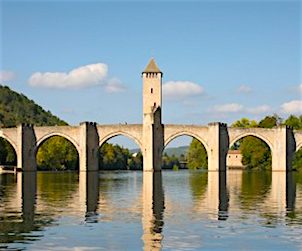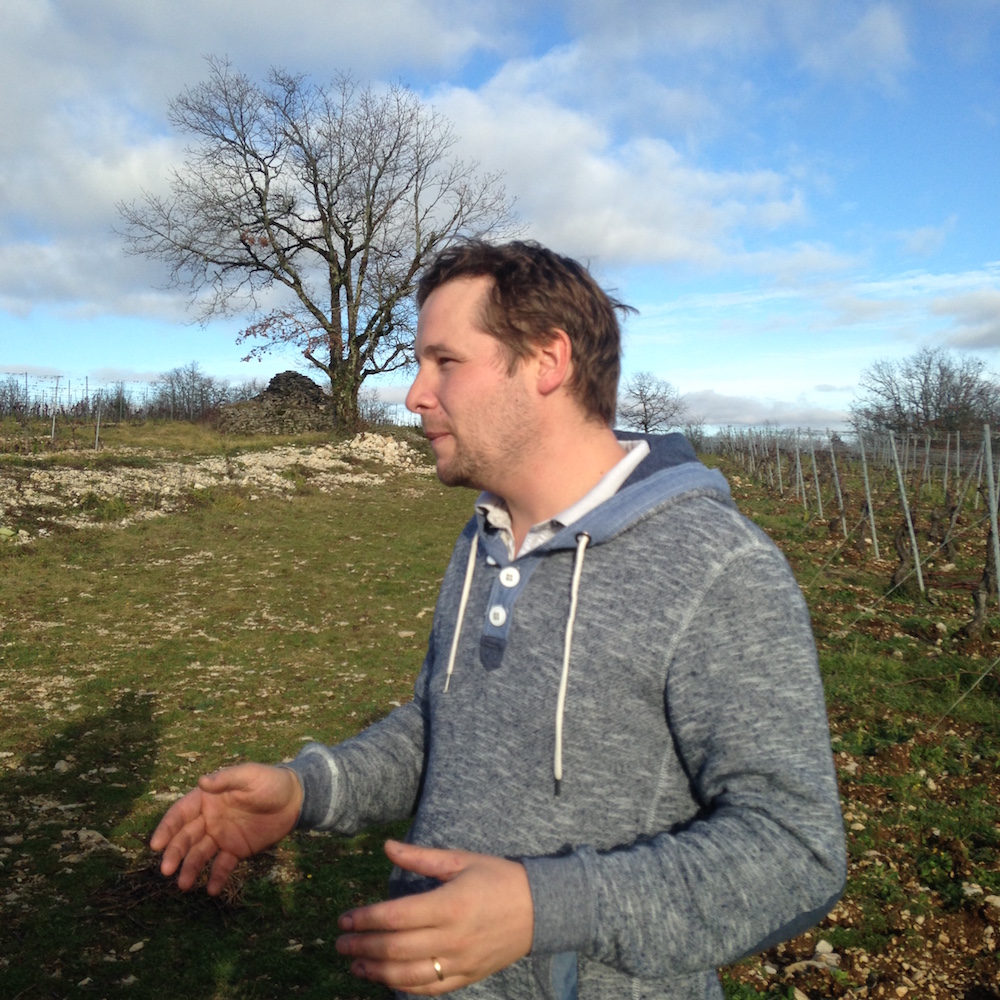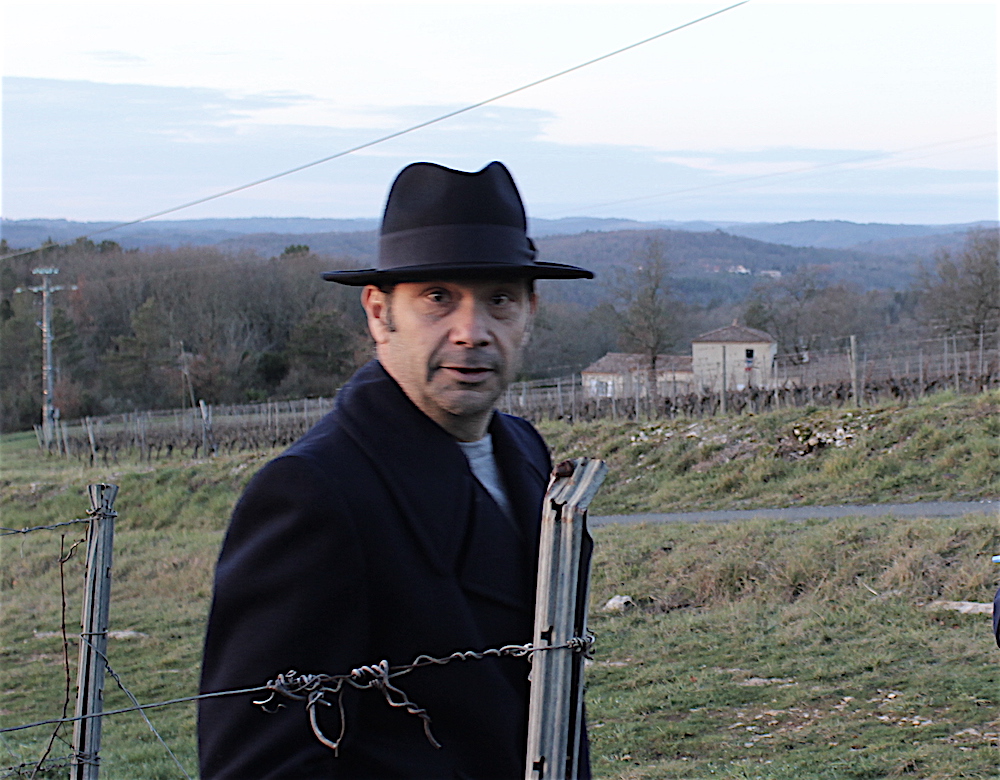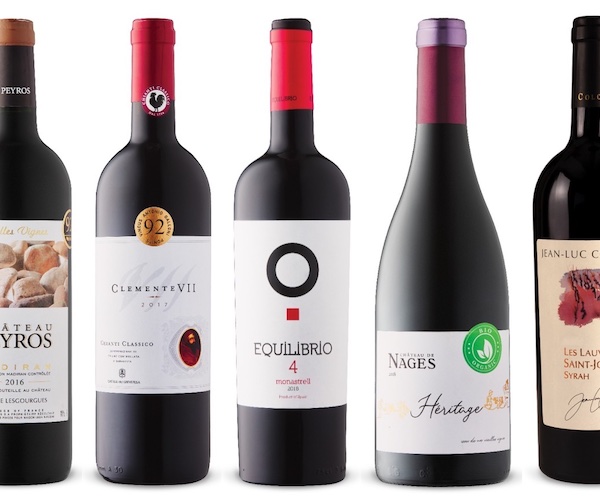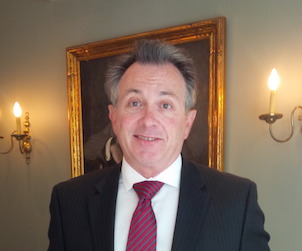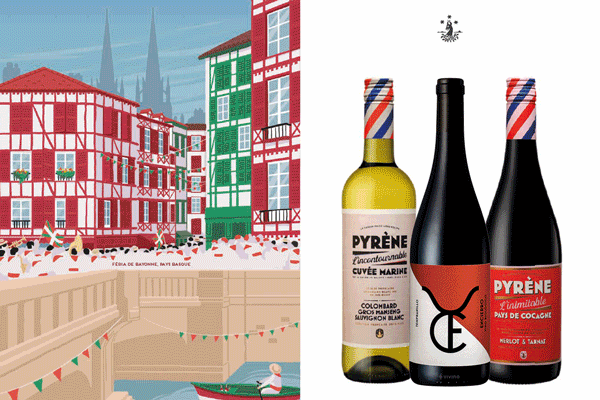Malcolm Jolley finds the future of Cahors in its hills.
“The future of Cahors is freshness, acidity and minerality,” said Germain Croisille on a hillside of vines above the hamlet of Fages. We were in the highlands that surround the River Lot. Germain looks like a young a man on the threshold of his 30s. He is the winemaker at Château les Croisille, which his parents Bernard and Cécile founded in 1979. The soil is flecked by the white of limestone, which is used in the stones of the ancient hamlet, which houses the winery. Croisille is making organic wines from the Malbec grape that fit his prophecy: they are exciting and alive.
A few kilometres away from Fages on another hill summit, an older man, Sébastien Dauliac of Domaine de Capelanel is making “mythic cuvées” on siderolythic soils full of iron. A fifth generation vigneron, Dauliac is breaking traditions and leaning into natural ways of making wine. He’s also making wines in amphora, and otherwise with minimal oak intervention. His wines are also very much alive, with a stunning acidity that holds for years and years.
The Croisille and Dauliac farming families are, I think, the exciting future of Cahors, which I visited earlier this year as a guest of the Union Interprofessionnelle des vins de Cahors. In my previous post on Cahors (here), I explained how the region’s history and recent wine trends had conspired to hamper its wines’ renown. In a January Decanter article, Andrew Jefford writes about how fellow Malbec winemakers from Argentina, including the American super-consultant Paul Hobbs, are investing in Cahors. They will, no doubt, do well and add to the (would be) first growth Cahors Château like Lagrazétte and Cédre.
In Jefford’s article is a revelation about Cahors that is bigger, I think, than the investment news. Jefford quotes Hobbs’ French partner Bertrand Vigouroux: “Unlike Pauillac or Pomerol, we have room to expand. As a region, we’re a wine start-up.” What Vigouroux is refering to is the 80% of pre-phylloxera vineland in Cahors that was never replanted. In my previous Cahors post, I explained that the lands replanted in the 20th century tended to be the ones by the river or attached to an established grand château. This leaves the highlands, or Causses, as Cahors great source of potential. And on these it’s these super mineral-rich, agriculturally poor and vine stressing lands where much of the more interesting Cahors wines are being made.
I saw the future of Cahors, and it’s on the farms and in the cellars of the Croisille and Dauliac families.
 Malcolm Jolley is a founding editor of Good Food Revolution and Executive Director of Good Food Media, the company that publishes it. Follow him on Twitter or Facebook.
Malcolm Jolley is a founding editor of Good Food Revolution and Executive Director of Good Food Media, the company that publishes it. Follow him on Twitter or Facebook.

